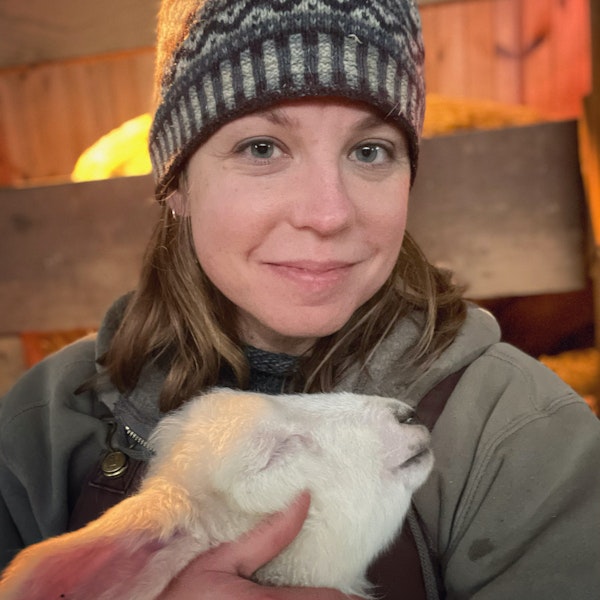
Kate Larson, editor of Farm & Fiber Knits, was the editor of Spin Off from from 2018–2025. She's excited to continue serving Spin Off as content editor. Kate teaches handspinning around the country and spends as many hours as life allows in the barn with her beloved flock of Border Leicesters.
How do you get ready for the new year? The Spin Off crew have all been preparing to say goodbye to 2018 in their own way. Happy Handspun Holiday from our flocks to yours!
My Shetland Half-Hap is finally finished—it was a fun handspun lace project from beginning to end.
Most fiber artists I know have a stash of loose ends, remaining half-balls of yarn from knitting projects or piles of thrums too beautiful to throw away.
Woolen-spun yarn is often a soft single with comparatively more ply twist, so once your skein is pulled off of the niddy noddy, it will look like a mess.
Have you tried spinning flax? I love opening a new strick and imagining all of the textile possibilities for the long, lustrous fibers.
How do you create the shading and shifting gradients that make Fair Isle knitting so irresistible? You can start with fibers that are all exactly the color you need, or you can blend them yourself!
Have you ever tried spinning for inkle weaving? I was inspired to give it a go after seeing an abundance of beautiful, handwoven bands during my travels in Estonia and Norway.
This roving reporter has just returned from Baltimore, Maryland, stuffed with crabcakes and carrying burgeoning suitcases stuffed with spinning fiber.
In the dozen or so fiber-laden vendor halls I visit each year, I love seeing spinners encounter yak/silk combed tops for the first time.